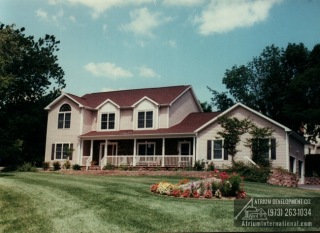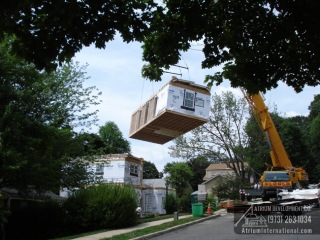Modular Homes are Built Smarter and Built Better
Modular homes offer consumers quality construction methods that take advantage of modern technology. Contrary to a conventionally-built home, which is assembled on the home site, piece by piece and exposed to the elements throughout the entire construction process, modular homes are constructed in segments (called “modules”) in a climate-controlled factory by skilled craftsmen using precise machinery and methods.
Before a modular home leaves a factory, it is inspected by an independent third-party agency to ensure it meets your state building codes. Built to withstand the rigors of ground transportation and being lifted into place by a crane, many modular homes are typically built to stronger standards than conventional homes. For example, most modular homes are built with more framing materials and utilize multiple engineered methods to fasten these materials.
Once the main modules of your new home are constructed in the factory, complete with attached walls, floor, ceiling, wiring, plumbing, and interior fixtures, they are transported to your home site and placed on a permanent foundation by a crane. Depending on the size of your new home, it could be fully set on-site and weather protected in as little as one day.
Being constructed in a climate-controlled environment ensures that your new modular home will have consistent, level floors, square frames, and virtually no margin of error in finishings and trims.
The Benefits of a Modular Home
Speed of Construction
Among the most popular benefits of modular construction is quick turnaround between groundbreaking and occupancy. Some owners are able to move into their homes just months after initial contact with their modular homebuilder. Many custom modular homes are built in just a fraction of the time a comparable custom site-built home could be constructed. For home buyers who prefer to move into their new home sooner rather than later or who live in an area with a shorter building season and fickle weather, modular construction offers a timely solution.
Quality Control
One of the greatest advantages to modular construction is control. Building homes in a factory setting allows for more consistent quality due to uniform construction processes, training techniques, and inspections.
Factory assembly lines have been embraced by Americans for decades because of the efficiency of the process. Modular home manufacturers apply those efficiencies to the home building industry. Each worker in the modular plant has been trained to do a particular job and through experience, has become an expert in that one aspect of home construction. In site-built construction, most contractors’ employees do a range of jobs from framing to roofing to installing floor covering. They may or may not be skilled to any one home building task, and are instead doing everything.
Modular home buyers can always be assured their home meets or exceeds all state building codes. All modular homes are inspected by an independent, third-party home inspection agency before the home leaves the factory. Once a modular home is erected on-site, it is again inspected, this time by a local building inspector, to ensure that the new home is built with the quality and structural integrity required in your community.
Cost Control
There are many factors that may make modular homes more cost-effective than site-built homes. Modular home producers are able to purchase materials in bulk and store those materials for a longer amount of time than most conventional builders. When material costs increase, so does the savings of bulk buying.
Modular homes also control home building costs after the modules leave their production facility. Weather delays, which cost both the home builder and buyer time and money, are reduced significantly. Also, there is less theft of building materials on a modular construction site; once the home is set on its foundation; it is more complete and secure.
Design Flexibility
While most modular home manufacturers have a portfolio of home plans, there are limitless design possibilities when planning your new modular home. Most architects and designers use computer-assisted design (CAD) programs to accurately sketch customizations into a floor plan. The modular industry takes CAD to another level; not only can your customizations be designed through computer software but the program will communicate your designs to the machinery in the manufacturing facility, ensuring your custom home design is built accurately and precisely.
Energy Efficiency
The construction process of many modular homes allows for easier identification and filling of gaps around pipes, electrical outlets, windows, doors, and exterior sheathing. Not only does this make many modular homes tighter, but allows for less air infiltration and advanced energy efficiency, resulting in lower heating and cooling costs for the homeowner.
Shipping, Stability & Superior Strength of Modular Homes
After construction in the factory, the modules are loaded for transport. To deal with the rigors of shipping, each modular home is constructed with roughly twenty to thirty percent more material than a traditional stick-built home (for example, drywall is typically glued with a special adhesive and then screwed to the framing). This greatly increases the structural strength of the home as noted in a FEMA study of Hurricane Andrew. The study concluded, “the module-to-module combination of units appears to have provided an inherently more rigid system that performed much better than conventional residential framing.” Building Performance: Hurricane Andrew in Florida, FIA-22, Item 3-0180.





